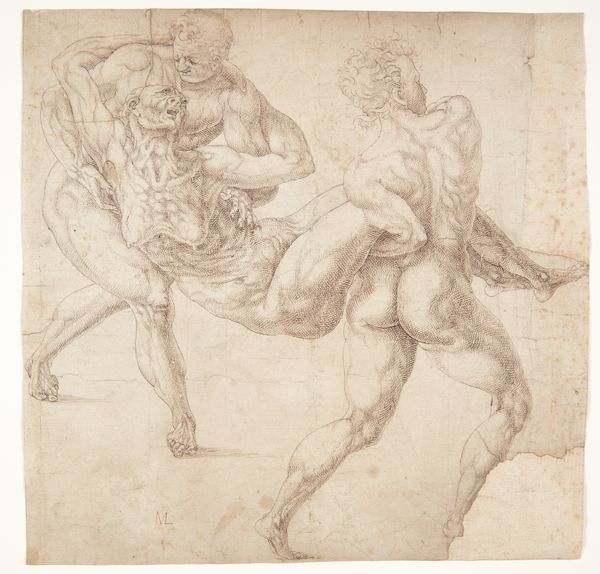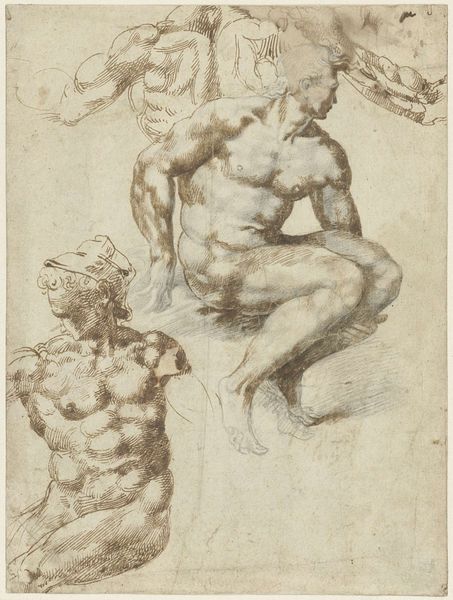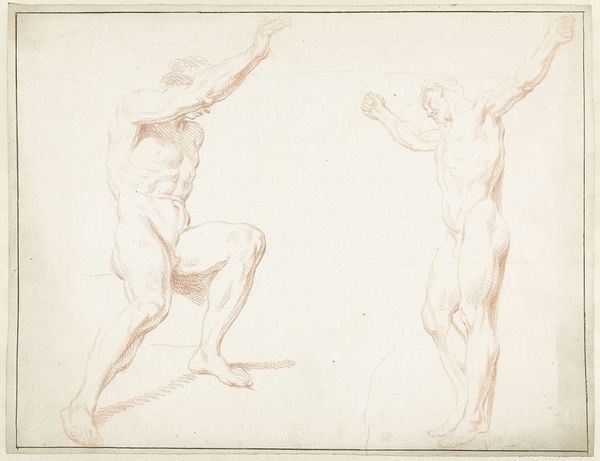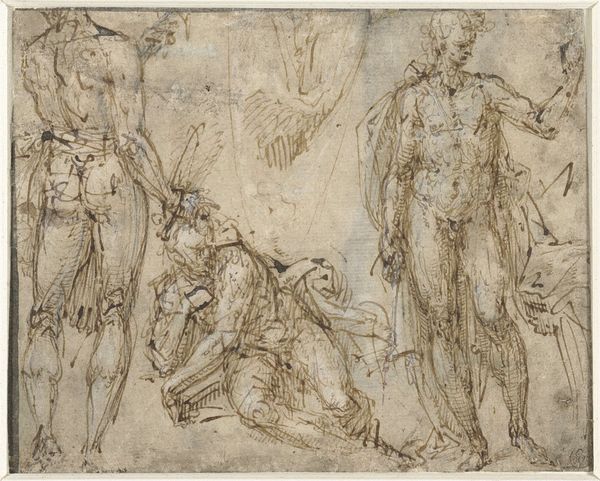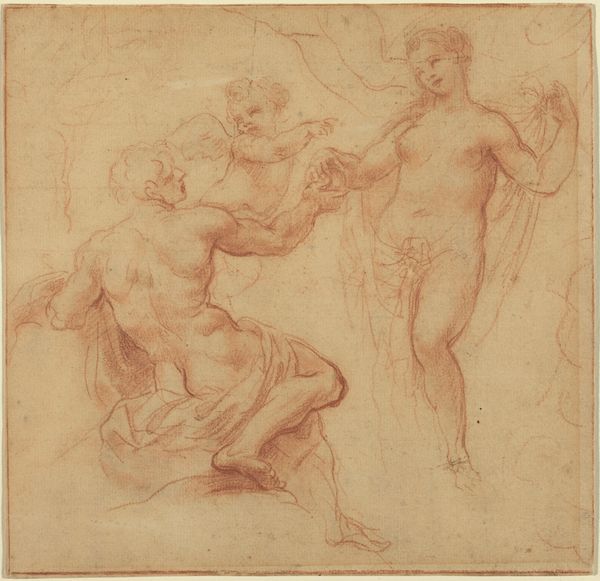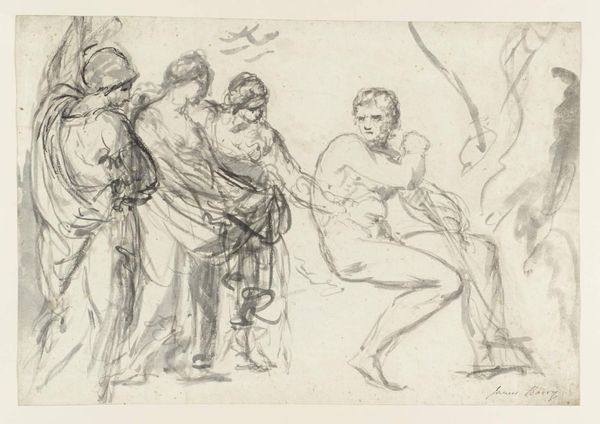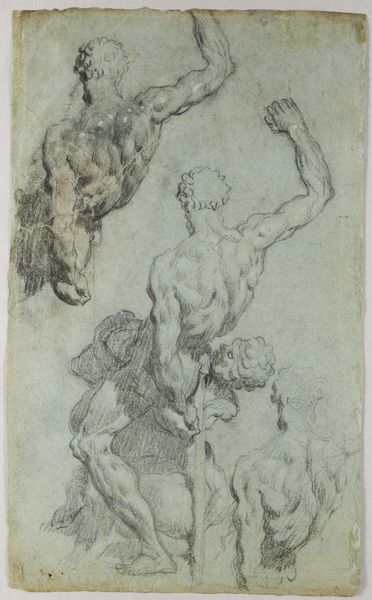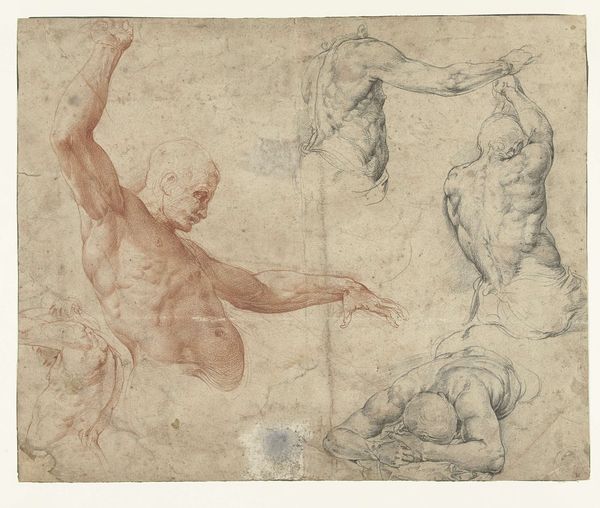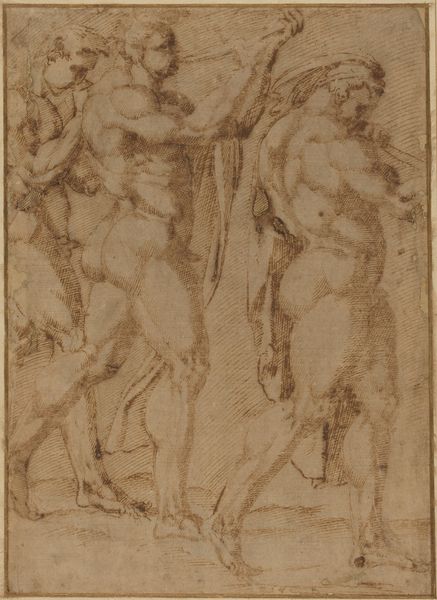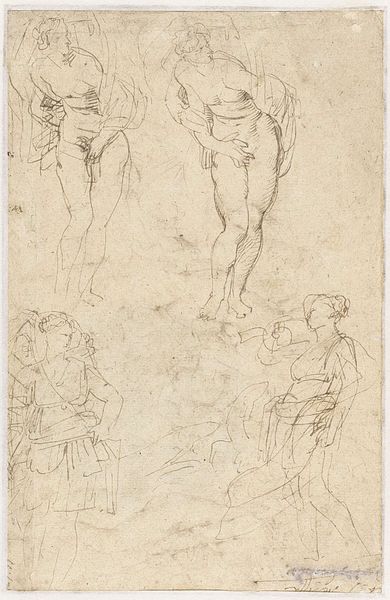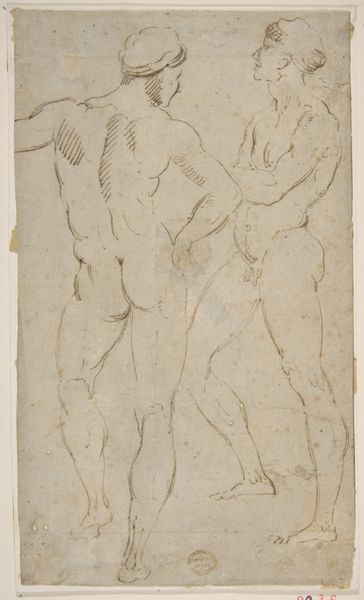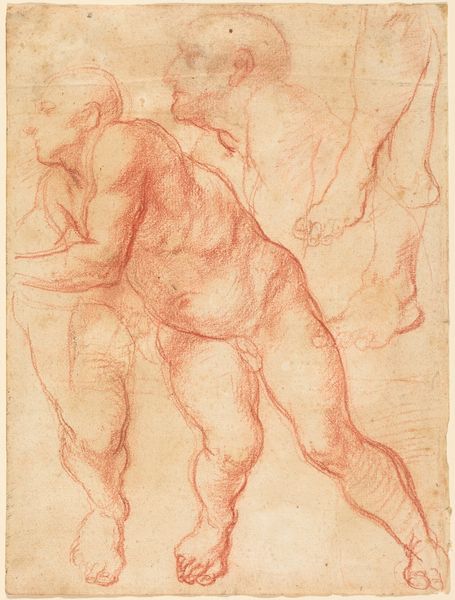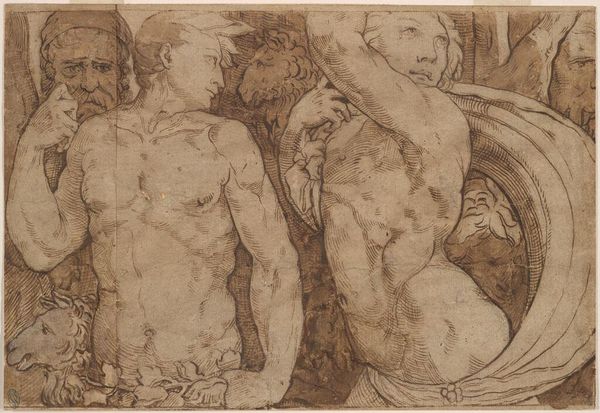
drawing, pencil
#
drawing
#
charcoal drawing
#
mannerism
#
figuration
#
11_renaissance
#
pencil
#
academic-art
#
nude
Dimensions: height 289 mm, width 425 mm
Copyright: Rijks Museum: Open Domain
Curator: Look at the bold musculature in Lambert Lombard's "Three Naked Men in Various Poses," dating from 1537 to 1539. It's currently housed right here at the Rijksmuseum. Editor: My first thought is... energy. Despite being static poses on paper, they exude power and motion. The material quality alone, seeing charcoal and pencil create that tension, is captivating. Curator: Precisely! Lombard, working in Liège, was deeply influenced by Italian Renaissance ideals. He brought those artistic and intellectual currents north. Drawings like these served as vital tools, disseminating the humanist interest in classical antiquity. Editor: Absolutely. This drawing highlights that flow. The emphasis on the male nude as an idealized form; think about how these bodies are made - how much work goes into that, the process and craft that elevates ordinary forms. Curator: Indeed. Mannerism is evident here - the heightened anatomical detail and dramatic, almost theatrical gestures reflect that style's development. The nude took on new meanings at this time. Not simply about classical ideals but linked to specific ideas around beauty, anatomy, scientific advancement. Editor: Considering this wasn't some large-scale mural, what strikes me is the physicality of its making. Imagine the artist’s hand, the repetitive strokes shaping those muscles, transforming the material. The repetitive craft. It makes it intensely personal. Curator: And for its viewers, these men became part of an intellectual and social exchange. These studies weren’t isolated artworks, but elements contributing to the era’s fascination with classicism, disseminated by prints and drawing academies that taught new generations. Editor: We forget art production requires labor. Someone prepared that paper, someone mixed the charcoal or sharpened the pencil, someone, probably multiple someones, invested time, resources, into material. What we have before us embodies not only the Renaissance vision but a whole host of production efforts. Curator: Yes! And viewing it today, we inherit the legacy of those Renaissance debates, reshaped by historical narratives, by our museum displays, and by the socio-political ideas that value or devalue artistic forms, production, labor or meaning. Editor: Lombard's charcoal strokes are so energetic and forceful! Getting to see that work ethic reflected in each body and in each production element gives the figures an extra layer of appeal that I would have otherwise looked over.
Comments
No comments
Be the first to comment and join the conversation on the ultimate creative platform.
